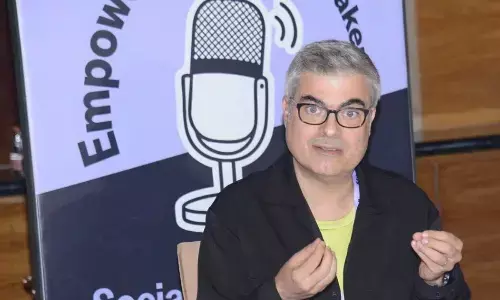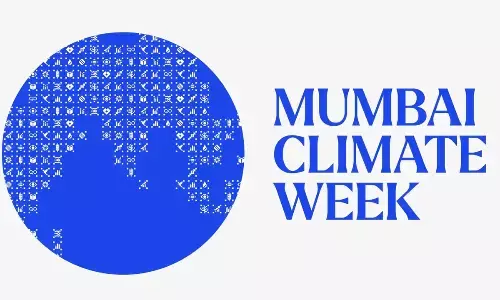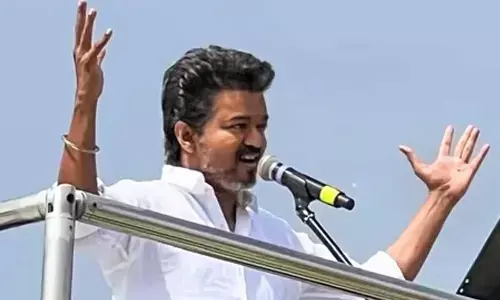A date with carbona

Radiocarbon dating is a method of estimating the age of organic material. It was developed right after World War II by Willard F. Libby and his team. Some examples of the types of material that radiocarbon can determine the ages of are wood, charcoal, marine and freshwater shell, bone and antler, and peat and organic-bearing sediments.
Radiocarbon dating is a method of estimating the age of organic material. It was developed right after World War II by Willard F. Libby and his team. Some examples of the types of material that radiocarbon can determine the ages of are wood, charcoal, marine and freshwater shell, bone and antler, and peat and organic-bearing sediments.
Carbon dating uses the half-life of Carbon-14, a naturally found radioactive form of carbon, to find the approximate age of certain objects that are 40,000 years old or younger. The carbon-14 atoms combine with oxygen to form carbon dioxide, which plants absorb naturally and incorporate into plant fibers by photosynthesis. Animals and people take in carbon-14 by eating the plants.
The ratio of normal carbon (carbon-12) to carbon-14 in the air and in all living things at any given time is nearly constant. Maybe one in a trillion carbon atoms are carbon-14. Both Carbon-12 and Carbon-13 are stable, but Carbon-14 decays by very weak beta decay to nitrogen-14 with a half-life of approximately 5,730 years.
After the organism dies it stops taking in new carbon. To measure the amount of radiocarbon left in a artifact, scientists burn a small piece to convert it into carbon dioxide gas. Radiation counters are used to detect the electrons given off by decaying Carbon-14.
At the moment of death, the amount of carbon-14 begins to decrease because it is unstable, while the amount of carbon-12 remains constant in the sample. Half of the carbon-14 degrades every 5,730 years as indicated by its half-life.
By measuring the ratio of carbon-12 to carbon-14 in the sample and comparing it to the ratio in a living organism, it is possible to determine the age of the artifact.
“I’m seven years and two months old”, said Nick triumphantly.
“Well, I am older; I’m seven years and six months”, said Bridget, folding her arms in the defiant way that she did.
“Pooh! Both of you are just kids”, said Peter, who was a bit taller than either of them. “I am almost eight. My birthday is next week.”
“Well, if you’re almost eight, what are you doing in the second grade with us?”asked Clarissa cheekily. “You should be in the third grade. You must have failed a year!”
The other kids laughed, and Peter skulked.
“Laugh all you want, but I will be the one doing the best “show and tell” presentation on Monday”, said Peter. “I’ll get my big brother.”
“Well, if you’re getting your big brother, I will get my dad”, said little Bridget. “He’s definitely older than your brother!”
“Then I should get my grandfather”, said Clarissa. “He’s ancient!”
“But the teacher didn’t ask us to get the oldest human we could find”, said Nick. “She told us to get some ‘thing’ that is quite old— anyway, older to us, I suppose— and she told us to explain how we could tell its age.”
“Yeah, my grandfather has grey hair”, said Clarissa. “That’s how I know if someone’s old.”
“But you could never know for sure just by seeing someone’s hair!” exclaimed Nick.
“Alright, smart guy, let’s see what you get on Monday”, said Peter loudly. “If you get something better than us, you get to be the leader of our group. If you don’t, you’re out of our gang.”
“Agreed”, said Nick, and started walking away.
“Don’t think of getting your big brother, my brother’s way older than him!” called Peter loudly after him, while the others laughed.
That evening at home, Nick could only think of what he would present at the “show and tell” session at his school on Monday. He had a sleepless night worrying about it. The next morning, he tiptoed into his older brother, Joe’s room. Joe was a tall, lanky teenager with glasses and freckles, who was in his last year of high school.
“Joe”, he called. “I need your help. We have to show—”
“No. The last time I helped you out, you went howling to Mom that I’d given you something too difficult to do. No way I am going to do anything for you now”, said Joe firmly.
“But please, it’s for tomorrow—”
“Tomorrow? Then no way at all. Just get out of my room.”
“But you are the science geek! You’re the studious nerd with glasses who knows so much that all the teachers love you and—”
“That’s right, little brother”, said Joe, holding Nick by the shoulders, and giving him a stern stare. “I am the science geek, who’s loved by the teachers, but hated and isolated by all the kids in school— and this geek, has finally managed to get himself a date for tomorrow, which is a miracle in itself. No way I am going to let your homework spoil something good that’s happening in my life for the first time.”
“Oh”, said Nick. “Who is it?”
“You don’t need to know”, said Joe.
“Please, Joe”, pleaded poor Nick. “Just give me something from that science collection of yours, won’t you? I’ll do everything else myself. I want that bee trapped in amber.”
“What exactly is your homework all about?” asked Joe suspiciously. “Why do you want that?”
“We have to get something that’s really old. And we have to explain how we know it’s that old. Didn’t you tell me that bee must have got trapped in amber centuries ago?”
“Fine, but how will you explain how you know its age?” Joe asked.
Nick looked at him blankly.
Joe sighed. It looked like he had to do something for Nick after all. He thought of his date, Alicia. He had never thought she would ever go out with him to Rick’s party, but she had said yes. Now he’d have to call her and pull out of it.
“Alright. I’ll give it to you, but not here. I’m coming with you to school. And I’ll give you something else as well, and tell you what you should say there.”
The next day, when Nick reached school for the presentation with Joe, the kids had all brought something. Clarissa had brought an old fountain pen, which she said belonged to her great-grandfather, and had the year of its manufacturing engraved on it; Peter brought an old book, which had its year of publishing as 1831; and Bridget had brought a very, very old coin. They looked curiously at Nick, who seemed to be empty-handed.
At last, it was Nick’s turn. “I’d like to show you all two things”, he began. “one is this pine cone.”
He held up the cone high for all to see. “That’s a pine cone, so what?” asked Peter.
“This pine cone belongs to a pine tree that’s very, very, old— around 5000 years”, he said. “It belongs to a bristlecone pine tree in California, called Methuselah. We can find out the age of a tree by counting the number of rings in its trunk, when you cut a tree.”
“So this tree was cut to find out its age?” asked a horrified Clarissa.
“No, it wasn’t. It still stands. But another tree, slightly older than this one, which was growing nearby was cut down by accident. And that is how we could arrive at a near-correct age for this tree.”
Everyone in the class seemed impressed. Then came the bee trapped in amber. “We have lots of dead organisms too, that get trapped in soil, or get pressed between rocks, or get trapped in amber, like this.
We can find out their age through a method called carbon-dating. Every organism has a certain amount of normal carbon, and a small percentage of radioactive carbon in its body, which goes down by half every 5,730 years. So, if we can compare the amount of radioactive carbons left over, and compare it with the amount of normal carbon, we can find out the age of the fossil.”
The teacher smiled. “that’s a lot of information for a seven-year old”, she said. “I’m sure many of them didn’t understand. However, of all the items brought today, Nick’s certainly stand out.”
Nick was beaming as he came out of the class. Joe was waiting outside. “Sorry I spoilt your date to talk about carbon –dating”, said Nick.
“You didn’t”, said Joe. “Alicia’s here too, waiting for her sister Clarissa”, he said smiling.



















